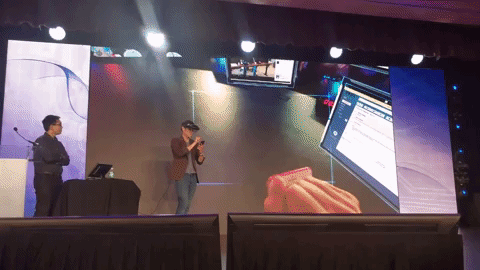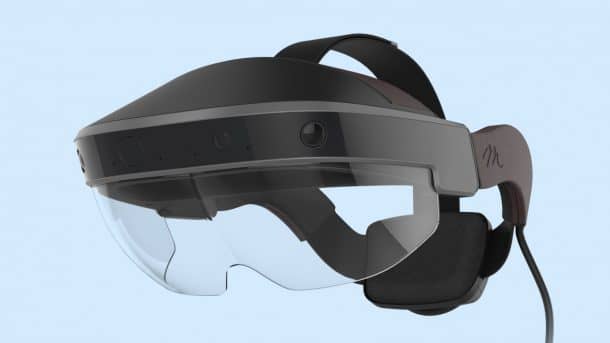Meron Gribetz, CEO, and founder of Augmented Reality (AR) based Meta, revealed a state of the art AR operating environment at Augmented World Expo (AWE) he calls Meta WorkspaceTM. Gribetz flaunted the key features of this astonishing AR technology that is bound to change the way we work with computers in our offices.
Silicon Valley-based Meta has been leading the field of AR since its inception in 2012. What began as a successful Kickstarter campaign, Meta bursted onto the scenes with their see-through glasses that allowed the wearers to play around with 3D content intuitively using natural hand movements. Then it again made headlines at TED 2016 after the introduction of the groundbreaking Meta 2 Augmented Reality Development Kit at TED 2016.

But none of them compares with what Gribetz revealed about the Meta Workspace. The technology consists of AirgrabTM which allows you to reach out and grab objects on your desktop. This is essentially the only thing you need to learn to work in Meta AR. The technology is based on affordance-based user interface (UI), which makes the Meta Workspace “launcher” to be more physical than our current computing environment. The concept utilizes shelves that give brain depth cues and helps in retrieving content by a unique combination of 2D content, 3D content, and tools.
The most amazing aspect is its spatial content layouts, which allows you to place as many virtual “monitors” as you like wherever you need them!
“Our customers want to do more than chase digital critters and monsters: 80 percent of them are coming from industry, only 5 percent entertainment,” Gribetz elaborated. “They want to take their work to new heights. Design products in life-sized 3D, view holographic multiple monitors to free their traders and engineers from their screens, visualize data in ways that are far more relatable. To enable all of this, we decided our top priority was going to be creating the most intuitive AR experience possible, and gear it toward getting real world work done in ways never achievable before.”

The Meta workspace takes holographic multi-monitor environment and aims to convert our current 2D workflow into flexible 3D content that is photorealistic, immersive and widely available. And by playing on the natural instinct of interacting directly by touching (of sorts), there is no steep learning curve involved for the users.
The technology will be marketed to numerous sectors such as product and building design, manufacturing, education, workplace productivity, and medicine. Meta is planning on mass shipping in summer 2017.
So are you buying? Let us know in the comments section.


